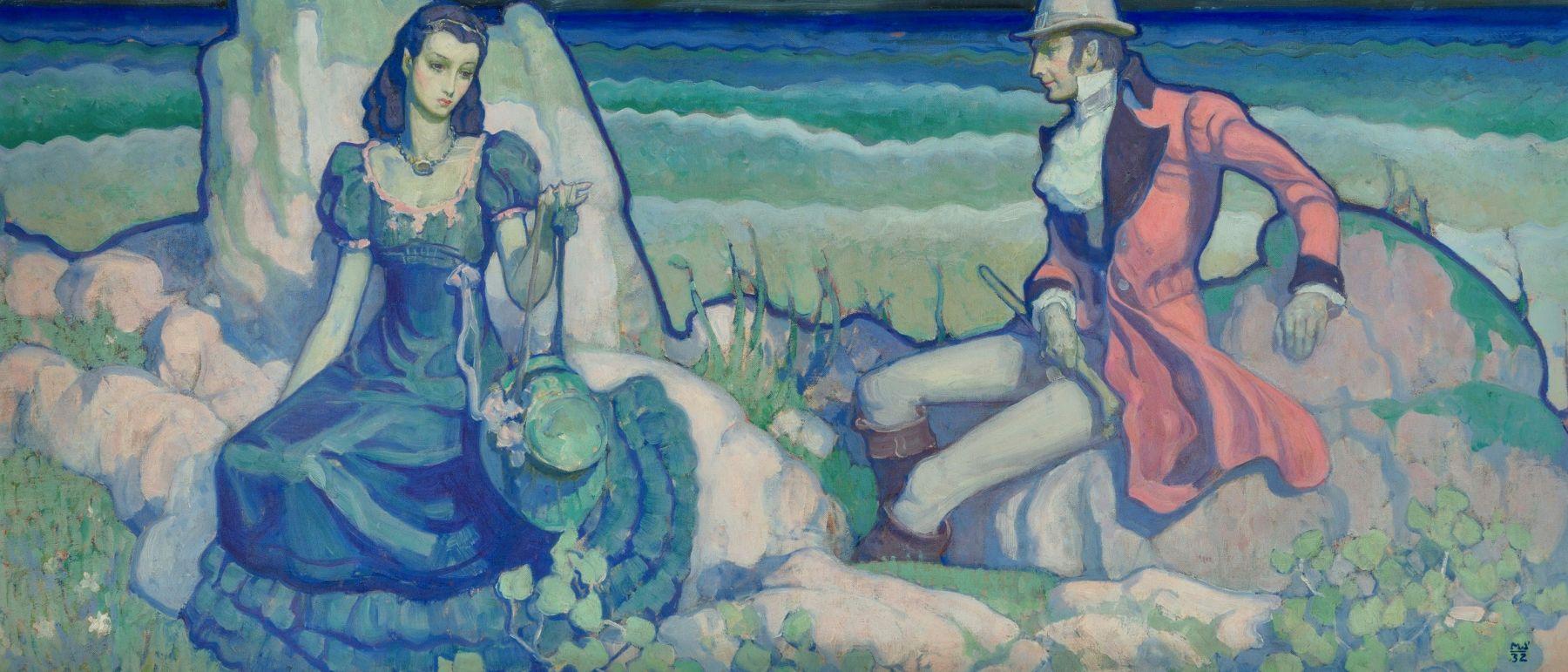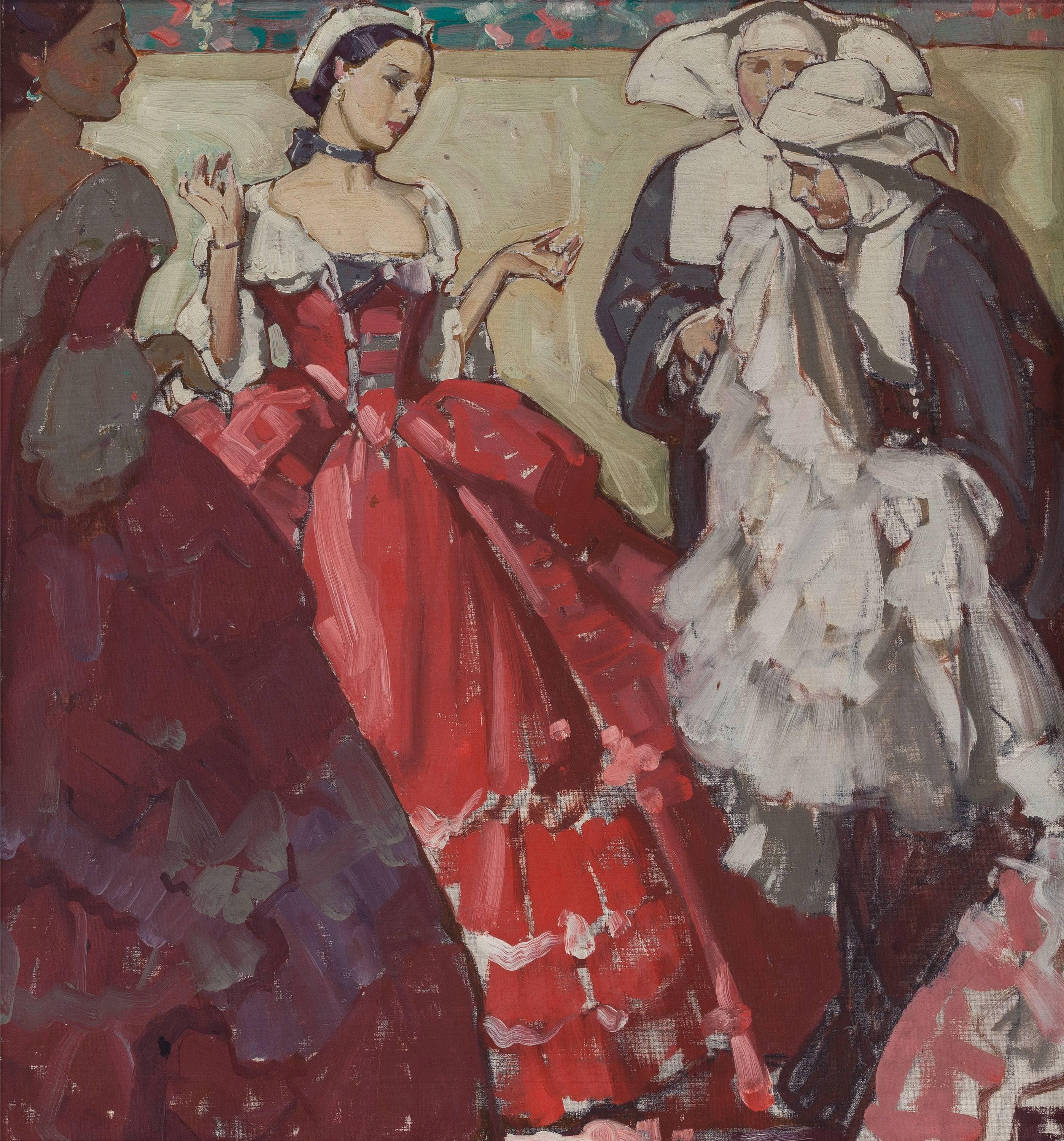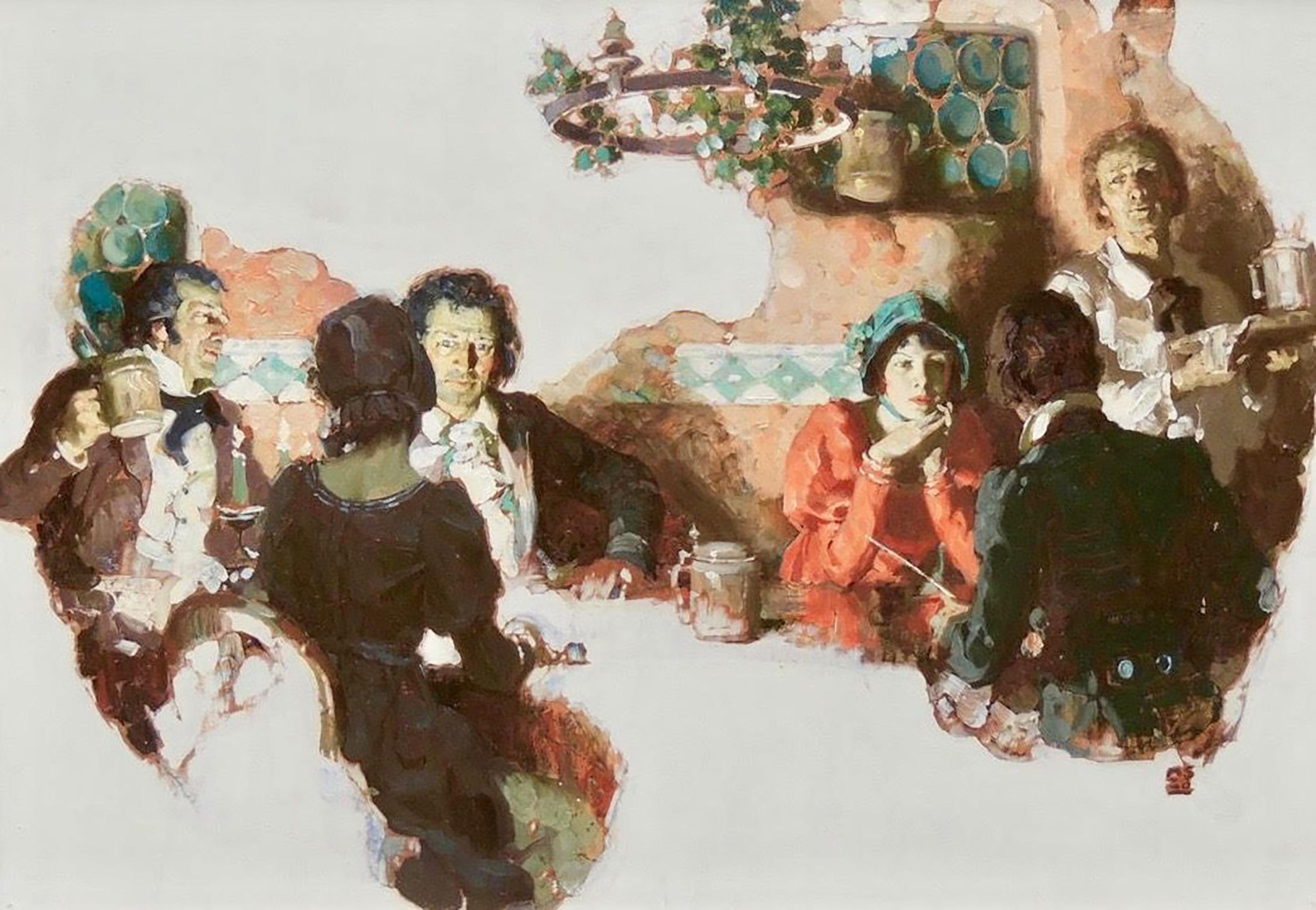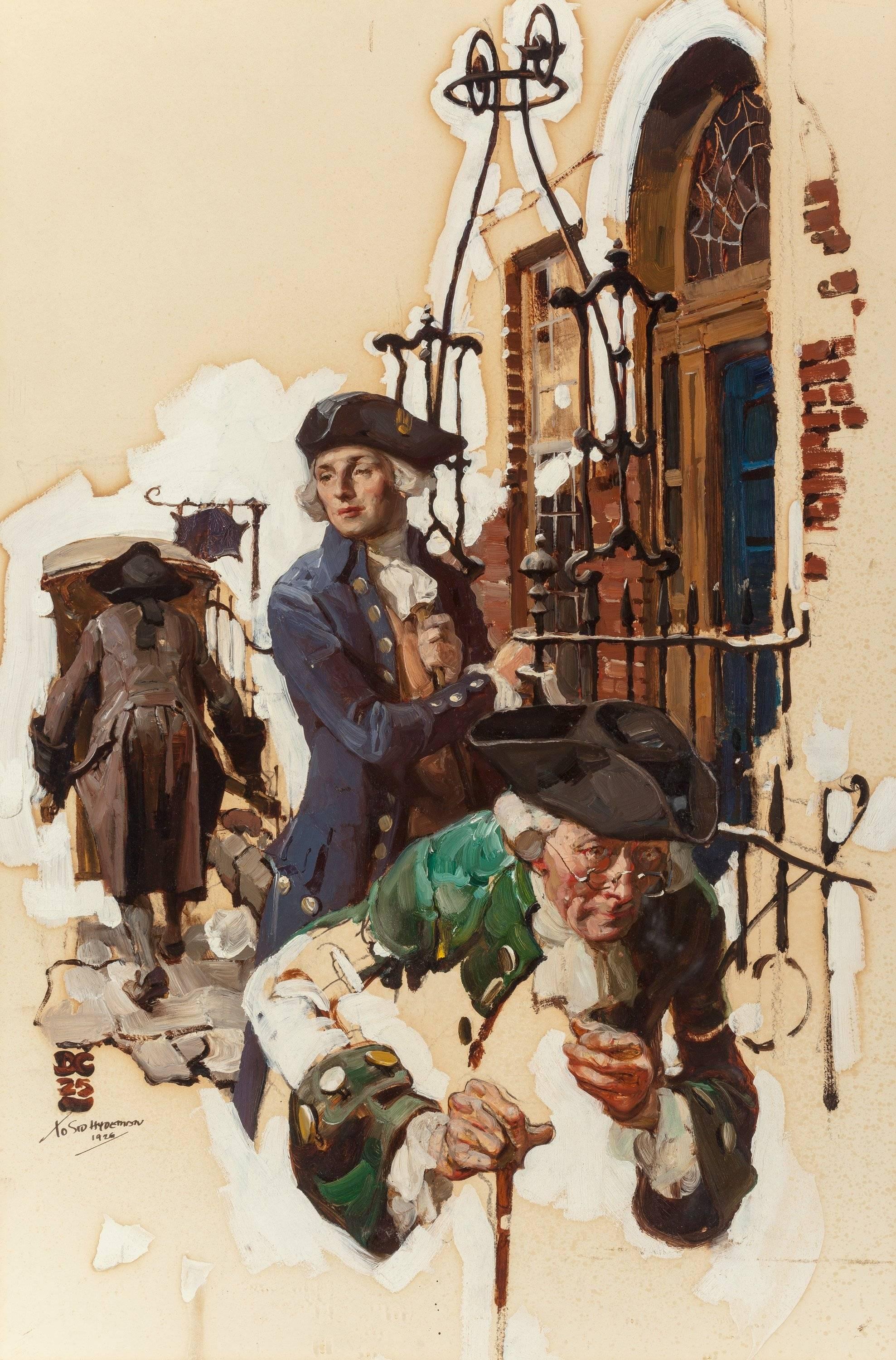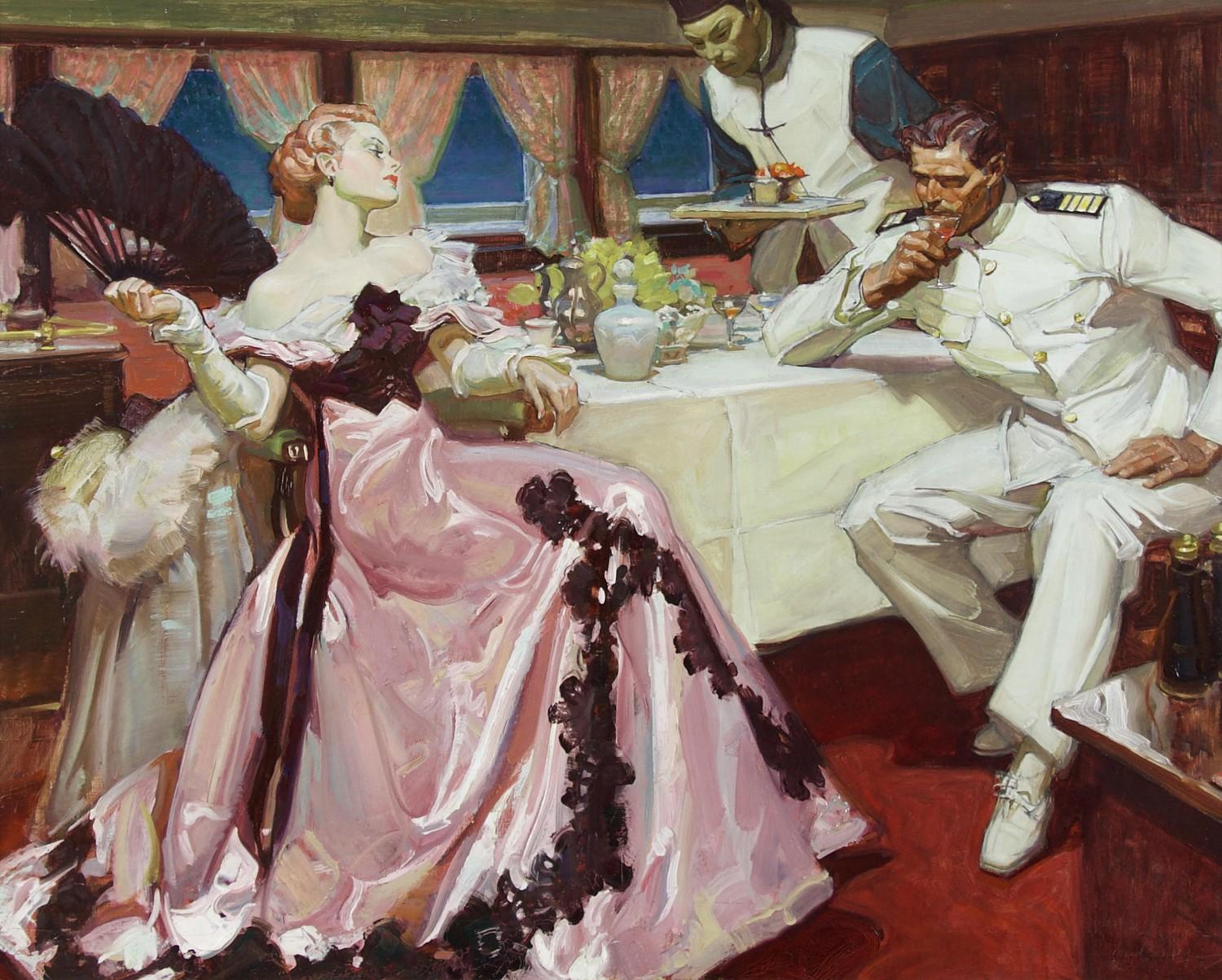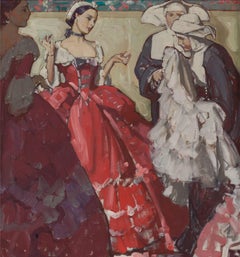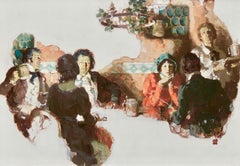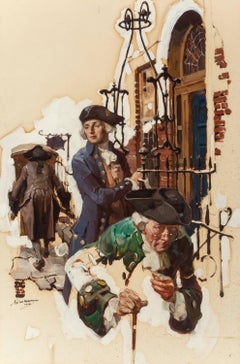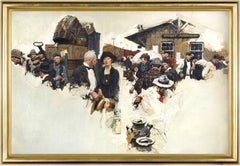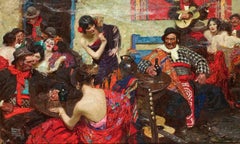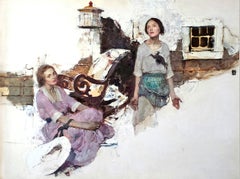Items Similar to “For A Discriminating Clientele: Duncan Phyfe” Packard Motor Car Company Ad
Want more images or videos?
Request additional images or videos from the seller
1 of 6
Mead Schaeffer“For A Discriminating Clientele: Duncan Phyfe” Packard Motor Car Company Ad1930
1930
$29,500
£22,790.62
€25,904.96
CA$41,944.83
A$45,655.08
CHF 24,048.86
MX$555,739.64
NOK 301,147.85
SEK 282,723.56
DKK 193,459.47
About the Item
Medium: Oil on Canvas
Signature: Signed Lower Right
Dimensions: 33" x 28",
Framed Dimensions: 36.5" x 31.5"
Original advertisement for Packard Motor Company, published 1930.
Though Packard automobiles ceased production in 1956, their reputation for elegance and fine engineering endures. This is due in part to the quality of the product itself, but also to their remarkably effective advertising campaigns. In their heyday, Packards were renowned for sumptuous style, exquisite craftsmanship, and a premium price tag.
Beginning in the late 1920s, the Packard Motor Company launched an innovative advertising campaign that went beyond simply showcasing a car, but painted a vivid picture of the glamorous lifestyle associated with owning one. Advertisements often paid tribute to renowned visual and performing artists and master craftspeople, or depicted consumers in elegant attire in exotic locales. This strategic approach aimed to emphasize Packard's appeal to a "discriminating clientele." This phrase was crafted to attract a sophisticated and discerning customer base by highlighting the vehicle's luxury and exclusivity.
Every Packard advertisement also featured a powerful slogan designed to inspire further confidence in the product: "Ask the man who owns one." First appearing in 1901, this confident declaration positioned Packard as a clear symbol of status and success. This groundbreaking concept of associating a consumer product with an aspirational lifestyle of wealth and sophistication was revolutionary at the time and set the standard for countless advertising campaigns that followed. (Reference: "Vintage Advertising: Selling Luxury" by Jeff Nilsson for The Saturday Evening Post online, published November 15, 2016)
Artist Mead Schaeffer, in an interview published in the Autumn 1977 issue of The Packard Cormorant, observed that "People were paying for the status of Packard ownership as much as for the excellence of the cars. It was a challenge to every artist who illustrated for Packard to portray this." Schaeffer himself produced four oil paintings for the "Discriminating Clientele" campaign, exploring themes such as Duncan Phyfe, Spanish Lace, Oriental Rugs, and Russian Ballet. Schaeffer's "Spanish Lace" illustration was not selected for publication; instead, an illustration by Saul Tepper was used. Both Schaeffer’s unpublished proposal and Tepper’s published illustration are part of our gallery’s collection. (Reference: "Pictures at an Exhibition" by Ed Heys, updated March 26, 2024)
Mead Schaeffer Evokes the Excellence of Packard Engineering through Duncan Phyfe
A notable Packard advertisement by Mead Schaeffer reinforces this message of discerning taste and quality. It features a couple and a young woman admiring a Duncan Phyfe chair. The man, with a monocle around his neck, holds the glass in his hand, poised to examine the piece of finely crafted furniture more closely. This visual narrative is underscored by the published caption: "Duncan Phyfe’s great genius as designer and master cabinetmaker won him the patronage of all the wealth and aristocracy of old Knickerbocker New York. His superb furniture brought international recognition for artistic and technical excellence." The advertisement draws a parallel between the exquisite craftsmanship of Duncan Phyfe furniture and the superior engineering and design of Packard automobiles, appealing to a clientele that appreciated such distinguished artistry and quality.
- Creator:Mead Schaeffer (1898 - 1980)
- Creation Year:1930
- Dimensions:Height: 33 in (83.82 cm)Width: 28 in (71.12 cm)
- Medium:
- Period:
- Condition:
- Gallery Location:Fort Washington, PA
- Reference Number:Seller: 7951stDibs: LU38435860292
About the Seller
5.0
Recognized Seller
These prestigious sellers are industry leaders and represent the highest echelon for item quality and design.
Established in 1995
1stDibs seller since 2016
139 sales on 1stDibs
Typical response time: 1 hour
- ShippingRetrieving quote...Shipping from: Fort Washington, PA
- Return Policy
Authenticity Guarantee
In the unlikely event there’s an issue with an item’s authenticity, contact us within 1 year for a full refund. DetailsMoney-Back Guarantee
If your item is not as described, is damaged in transit, or does not arrive, contact us within 7 days for a full refund. Details24-Hour Cancellation
You have a 24-hour grace period in which to reconsider your purchase, with no questions asked.Vetted Professional Sellers
Our world-class sellers must adhere to strict standards for service and quality, maintaining the integrity of our listings.Price-Match Guarantee
If you find that a seller listed the same item for a lower price elsewhere, we’ll match it.Trusted Global Delivery
Our best-in-class carrier network provides specialized shipping options worldwide, including custom delivery.More From This Seller
View AllPeggy O'Neil, Redbook Magazine Interior Illustration, 1932
By Mead Schaeffer
Located in Fort Washington, PA
Illustration for “Women America Remembers: Peggy O’Neil” by Arthur D. Howden Smith for The Red Book Magazine, published March 1930, illustrated pages 20-21.
This painting by Mead Schaeffer depicts a romantic encounter between Peggy O'Neil and her first husband, John Timberlake. The accompanying caption reads: "It was inevitable that Peggy should fall in love—and she did, with John Timberlake, who had little besides his face to recommend him." It was created in 1930 for the third installment of The Red Book Magazine’s “Women America Remembers” series, which features stories of women famous for “personality, beauty, wit or audacity, or because of the tragedy left in their train.”
Margaret ("Peggy") O'Neil Eaton remains a figure of historical intrigue, primarily for her central role in the "Petticoat Affair," a significant political scandal during Andrew Jackson's presidency. The circumstances surrounding Peggy’s marriage to John Eaton, occurring shortly after the death of her first husband, John Timberlake, and her family’s background as tavern-keepers, coupled with her perceived impudent personality, subjected her to intense social scrutiny in Washington D.C. Upon John Eaton's appointment as Secretary of War, Peggy faced social ostracism led by Floride Calhoun, wife of Vice President John Calhoun...
Category
1930s Figurative Paintings
Materials
Canvas, Oil
“For A Discriminating Clientele: Spanish Lace” Proposed Packard Motor Car Co. Ad
By Mead Schaeffer
Located in Fort Washington, PA
Medium: Oil on Canvas
Dimensions: 26.00" x 24.00"
Framed Dimensions: 30.25" x 28.25"
Original proposed advertisement for Packard Motor Company, circa 1929.
Though Packard automobil...
Category
Mid-20th Century Figurative Paintings
Materials
Canvas, Oil
Colonial Tavern Scene
By Mead Schaeffer
Located in Fort Washington, PA
Medium: Oil on Board
Signature: Signed Lower Right
Category
20th Century Figurative Paintings
Materials
Oil, Board
The Callers, Cosmopolitan Magazine Interior Illustration
By Dean Cornwell
Located in Fort Washington, PA
Date: 1925
Medium: Oil on Board
Dimensions: 25.5" x 16.5"
Signature: Initialed, Dated and Inscribed Lower Left: DC / 1925 / To Sid Hydemon / 19
Category
1920s Figurative Paintings
Materials
Oil, Board
"She Was in the Captain's Cabin" Original Magazine Story Illustration
By Mead Schaeffer
Located in Fort Washington, PA
She Was in the Captain's Cabin, magazine story illustration for "Captain's Boy," by Paul Deresco Augsburg, published in American Magazine, October 1938
The full caption reads: "She ...
Category
1930s Paintings
Materials
Oil, Canvas
Two Men
By Mead Schaeffer
Located in Fort Washington, PA
Medium: Oil on Canvas
Signature: Signed Upper Left
Image of two men, one seated and one standing. From the book Head Tide by Joseph C. Lincoln
Category
1930s Figurative Paintings
Materials
Canvas, Oil
$29,500
You May Also Like
Kindred of the Dust, Frontier Town Cosmopolitan Magazine
By Dean Cornwell
Located in Miami, FL
A somewhat similar Cornwell featuring a strong woman at the center of a the composition just sold at Christie's for $164,000. In this work we also see a strong woman at the center of the composition. Here she surrounded by men.
More than 20 beautifully rendered post-impressionist portraits in character, define Dean Cornwell as one of America's great artists. In his time, he was a famous as Norman Rockwell and was Norman Rockwell's favorite illustrator. "One thing puzzled Dirty Dan extremely. That was the perfectly frank, friendly manner in which his employer and this outcast woman greeted each other, the earnestness with which they conversed, and the effect of the woman's low-spoken words upon the color of Hector McKaye's face."
Morris Weiss collection...
Category
1920s Post-Impressionist Figurative Paintings
Materials
Oil
Spanish Tavern
By Dean Cornwell
Located in Miami, FL
There is no one alive that can paint and draw like Dean Cornwell. How can that be? They do not train artist the way they did. He was Normal Rockwell's ...
Category
1920s American Impressionist Figurative Paintings
Materials
Oil
Spanish Tavern
By Dean Cornwell
Located in Miami, FL
There is no one alive that can paint and draw like Dean Cornwell. How can that be? They do not train artist the way they did. Dean Cornwell in his day was as famous as Normal Rockwell...
Category
1920s Post-Impressionist Figurative Paintings
Materials
Oil
Stoic and Soulfully Strong Women - All Women Composition Euphorbia -
By Dean Cornwell
Located in Miami, FL
One of Cornwell's hallmarks is that he paints stoically soulful faces that express the subject's trials and hardships. In this only-woman composition, he depicts a scene of two women who are strong, unafraid, and self-confident and can weather the storm despite the challenges. In this regard, it is similar to "A Strange Sound Drifted Down to Kit from the Top of the Range—A Man’s Voice, Singing" by Cornwell, which sold at Christie's USD $163,800 on 18 Apr 2024.
Caption: "Are you making little things?" questioned Lucy. 'No ,' said Marge. 'If this one happens to live, there will be many long years ahead of us for that."
Morris Weiss collection...
Category
1920s Post-Impressionist Figurative Paintings
Materials
Oil
Vogue Magazine Cover – March 1, 1917 – Illustration by Frank X. Leyendecker
Located in Langweer, NL
Vogue Magazine Cover – March 1, 1917 – Illustration by Frank X. Leyendecker
Elegant original Vogue magazine cover from March 1, 1917, featuring an exquisite illustration by Frank Xa...
Category
Early 20th Century American Prints
Materials
Paper
Original 1918 Tell That To The Marines vintage World War 1 poster linen backed
By James Montgomery Flagg
Located in Spokane, WA
Original WWI James Montgomery Flagg Poster — “Tell That to the Marines!” (1918) — Rare Vintage Patriotic Artwork—archival linen backing and ready to frame. The poster edge was trimme...
Category
1910s American Realist Portrait Prints
Materials
Lithograph
